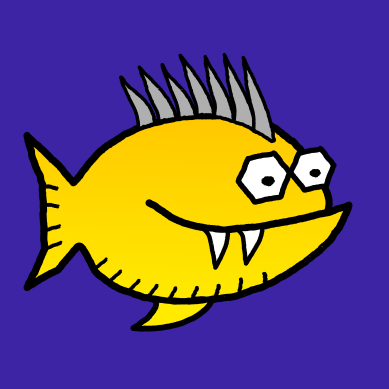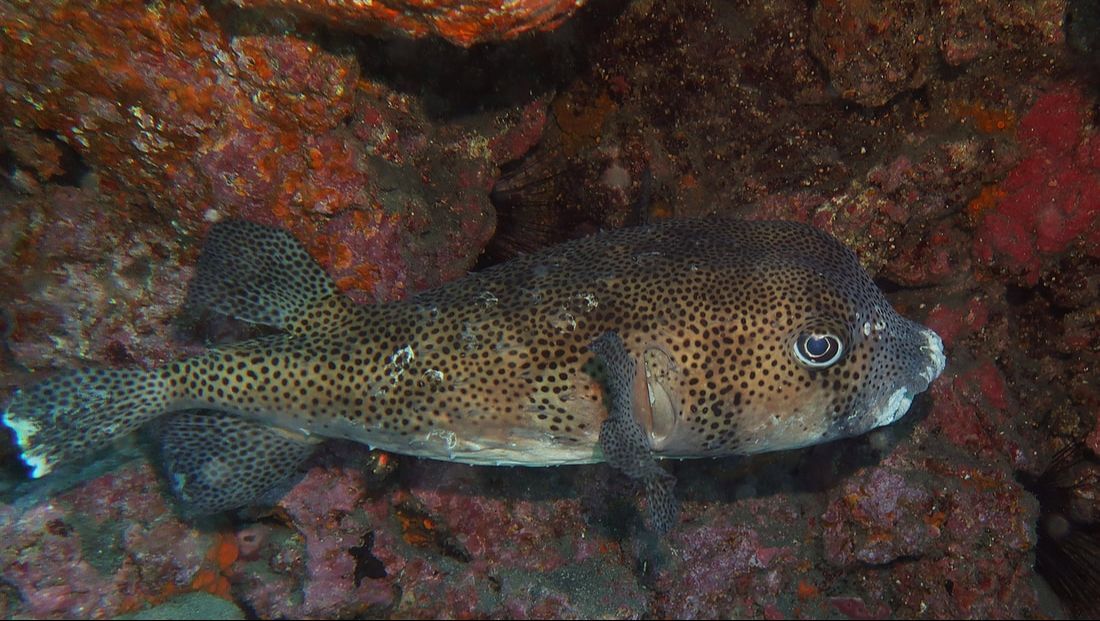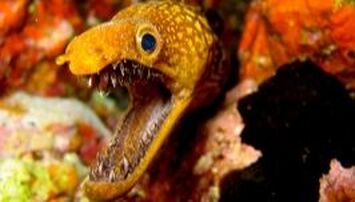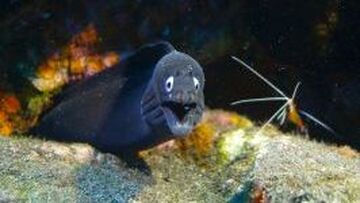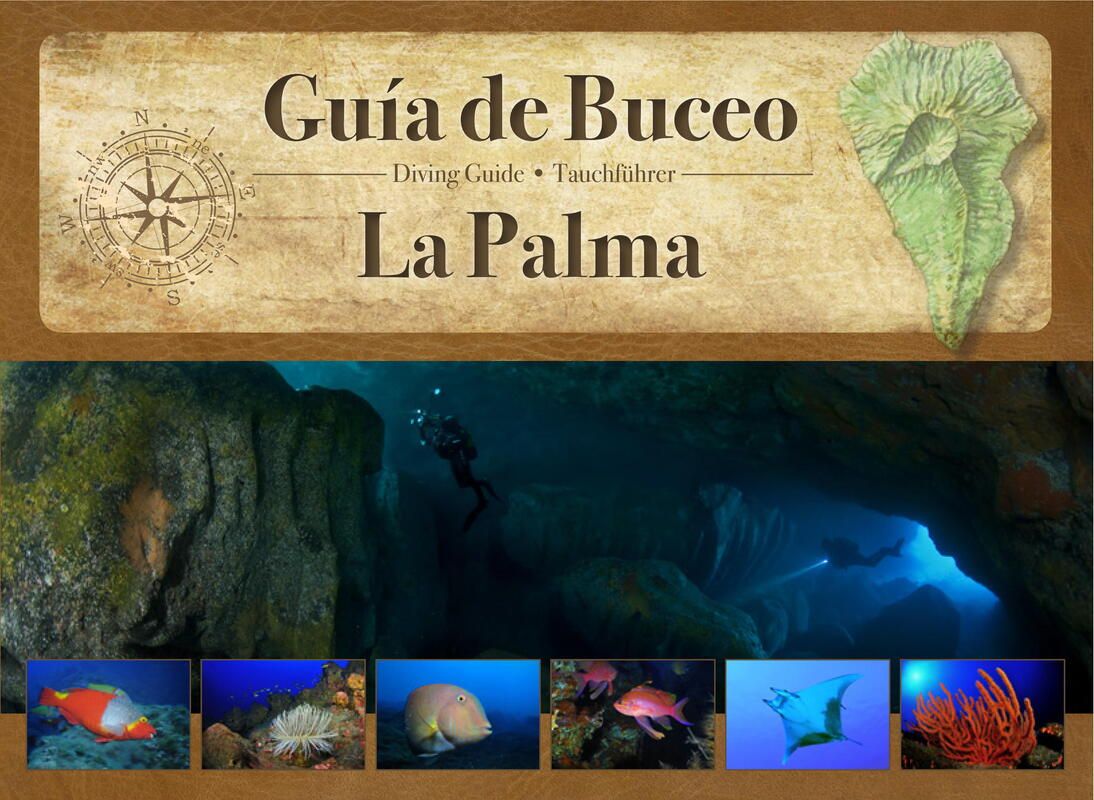Where are the best dive sites?
|
The south of La Palma is a must - not only for the famous underwater "cementery", but also for the fantastic spot "Las Cabras". Both places are absolutely worth a beginners dive as well.
In the west, we dive around the marine park and can therefore count with a huge variety of marine life. Some sites are better reached by boat, which we can charter from time to time. The East Coast is the shallower coast and offers us mostly calm conditions, therefore ideal for beginners and advanced divers alike. |
Malpique: The Tower, the arch and the crosses
|
Probably the most famous spot on La Palma is the underwater cementry of Malpique, a monument of stone crosses set in memorial to the hard ancient times of the crusades.
But it is not only the monument that makes the place attractive - we go out to a wall full of moray eels, and for experienced divers, we can cross an impressing arch at 38 meters to reach the top of a basalt steel coming up from the depth. A nice Canyon leads us back to the entrance, where we can relax and prepare for the next dive. |
Las Cabras - young lava under water
|
Our favorite dive site is situated on the south end of La Palma, surrounded by a moon-like volcanic landscape.
We enter the water in a small bay and follow some incredible lava tubes out into the blue. Rays are likely to swim across, and already at 30m we can find the first black coral. To keep a nice, healthy profile, we can spend the rest of our air at a shallower depth and swim through a beautiful arch. |
Los Molinos
El Faro
Playa Aljibe
La Bombilla - feels like the Latin Quarter of La Palma
|
In the small fishing village of La Bombilla, we find the entrance to the most bizarre lava labyrinth on La Palma. We can start our dive at a wall, crossing several lava tubes, and then "get lost" in the shallow part - until we are all of a sudden back to the entrance. From time to time a turtle is cossing our way, there are rays out in the blue, and seahorses can be hidden in the anchor lines.
This place is worth a dive from the shore and from the boat. We stop here frequently with the Bussard to discover the part of this spot which is too far from the entry. |
Puerto Naos
|
The reef of Puerto Naos offers us a wall starting at 10m and dropping down to 40m. We can go deep and enjoy the black corals, or stay shallower and search for moray eels whilst waiting for rays to come along and feel the blue water around us. No matter if we follow the lava flows down or cruise around the rocks, we will encounter a variety of species and enjoy an incredible dive.
|
Charco Verde - Arches in the Marine reserve
|
On our boat dives with the Bussard, we love to stop at Charco Verde, a spot which looks just different. Three big arches full with trumpet fishes, some big courious trigger fishes, and lobsters and shrimps in the holes - the place is worth a dive at any depth.
It is always possible to go here by shore, we just need to swim a bit. |
Los Cancajos
|
Protected by wave brakers, we can easily access the water and find a calm, shallow area for training and first dive experiences. It is full of colourful fish and absolutely worth a dive.
Through the easy protected entrance we reach the Chapel-cave, a large lava tunnel at 10m depth, and can even surface inside to watch all the little shrimps dancing in the light of our torches. Fortunately, this cave is even accessible for beginners, you do not need a special cave diver training. Further out, several lava flows lead us to the deeper parts of the area, through canyons and wonderful rock-formations. The rock named The Claw is always surrounded by schools of damselfish and wrasses, in the Cessna wing you find anemones, and the Green Garden is a deeper drop-off covered by spunges and gorgonias. |
La Bajita: Rochen und mehr
|
At the east side we find aswell a pittoresque place called La Bahita, just behind the airport. This place offers us a nice entry via a boat ramp or a ladder, and a landscape of several rock formations spread in between sandy areas. It is a perfect habitat for all kind of rays: Stingrays, Eagle rays, electric rays, butterfly rays... And if they are not around, we can still look out for octopusses and moray eels.
Close to La Bahita, there is another entry: Maretas with its white sand and impression depth, plus arches in the shallow part. But as it is quite dificult to get into the water here, we just do it when the ocean is really calm. |
|
La Salemera: Fish to observe and fish to eat
|
La Salamera is a very popular place on la Palma for its fantastic Kiosko, a nice little restaurant at the side of the beach which offers fish, fish and more fish. For those who prefer to see it rather than (or before) eating it, we have a very colourful divesite here. Characteristic is the amount of yellow sponges and the white sand, and some arches in the very shallow part.
|
Dive Guide La Palma - FREE download
|
Start dreaming... This Dive Guide invites you to be part of the adventures of an expedition exploring the beauty of La Palma under water. Perfect to prepare your holidays, with some information about diving, the marine environment - all you need.
With fantastic maps and fotos, written by Oceanografica. |
Maps
|
You want to know where you will dive? Download your full set of maps of the most important dive sites of La Palma.
|
